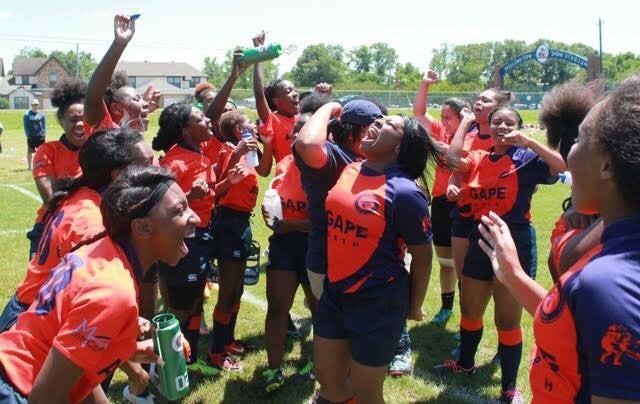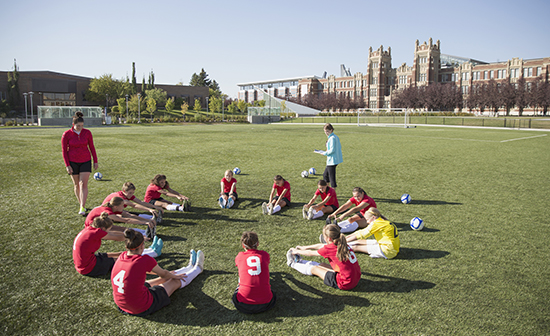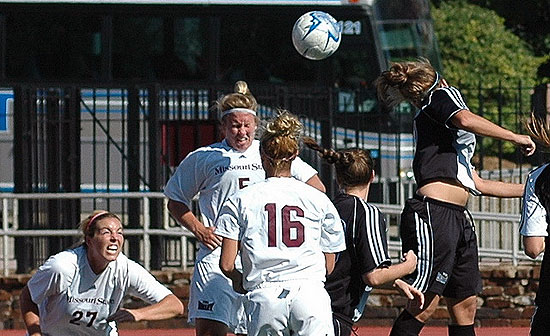This report is grounded in the rich history of Title IX and takes a multi-dimensional look at its impact. The report is based on a rigorous literature review and original research using publicly available data sets. The focus is primarily on the enforcement of Title IX in athletics and the three major areas that should be reviewed in ongoing and regular Title IX audits: athletic participation opportunities, allocation of athletic scholarship funding, and allocation of resources in operational areas. The report examines Title IX through the lens of intersectionality, explores emerging issues, and looks ahead to what is needed to accelerate the pace of change for the next 50 years.
50 Years of Title IX: We’re Not Done Yet

Teen Sport in America, Part II

Teen Sport in America, Part II: Her Participation Matters provides new data that identifies the health, academic, and psychological benefits that teen girls obtain on a sport-by-sport basis. The report is an extension of the WSF’s original 2018 Teen Sport in America: Why Participation Matters that addresses the important role that sports can play in promoting positive development among teens. It offers close examination of girls’ participation across 20 sports and the health, educational, and social-psychological benefits shown to be critical for long-term healthy development. The data and recommendations that follow can be used to inform the development of policy and sport programming, to promote the importance of investing in girls’ sports.
The State of High School Sports Report

This study builds on previous research and policy that view teen sports as an educational tool and public health asset.
The results highlighted that school-based athletics continued to be the most popular activity provided by high schools in the U.S. and was the only school-based extracurricular activity that showed an increase in participation rates between 1989 and 2015.
The study found that high levels of involvement in school-based athletics were one of the strongest correlates with lower levels of depression, higher levels of self-esteem, and lower levels of self-derogation, higher grades, greater aspirations to attend college or graduate school, lower risk of truancy (i.e., cutting or skipping class) and school misbehavior, and lower risk of experiencing academic problems.
The report was made possible through a partnership between the Women’s Sports Foundation and the DICK’S Sporting Goods Foundation.
Coaching Through a Gender Lens

A breakthrough study that examines the intersection of girls’ sports development with their “current day” experiences and the impact of coaches, through the voices of girls, their parents, and experts in girls’ development and sports.
In partnership with Nike’s Social & Community Impact division, Coaching through a Gender Lens examines girls’ own personal experiences in sport and the degree to which specific coaching practices/experiences impact their participation, motivation, and retention. The findings also highlight the major cultural, environmental, and policy-based barriers that contribute to the gender gap in sport, and the ways in which youth sports organizations serving girls can successfully meet their needs and foster their continued engagement in sport.
Coaching Through a Gender Lens Executive Summary
Power of Parents Research Brief
Coaching Through a Gender Lens Official Press Release here.
Coaching Through a Gender Lens Key Findings Illustration
Coaching Through a Gender Lens Infographic
How Tennis Influences Youth Development

How Tennis Influences Youth Development builds on two previous research projects — More Than a Sport: Tennis, Education & Health (2013) and Teen Sport in America: Why Participation Matters (2018) — that view teen sports as an educational tool and public health asset.
Deborah Slaner Larkin, through the MARGARET Fund at the WSF commissioned the WSF to update the data from More Than a Sport and, as it specifically relates to tennis, build on the findings of the Teen Sport Report by examining participation and retention levels as well as what combination of sports is associated with the best academic, social, health, and behavioral outcomes among adolescents.
Teen Sport in America

The Women’s Sports Foundation commissioned the Teen Sport in America: Why Participation Matters report to better understand the impact of sports participation on teen health, well-being and academic achievement.
WSF offers a “Teen Sport in America” toolkit to help organizations utilize this data to communicate the importance of youth sports participation. To request a copy, contact Kristen Gowdy.
Teen Sport in America Executive Summary.
Teen Sport in America Fact Sheet.
Her Life Depends On It III & Concussions

To assist readers who have specific interests, the WSF has created a series of Research Briefs from Her Life Depends On It III.
Her Life Depends On It III is the Women’s Sports Foundation’s comprehensive report that reviews existing and emerging research on the links between participation in sport and physical activity and the health and wellbeing of American girls and women. As with the previous editions in 2004 and 2009, this study also confirms that physical activity and sport provides the critical foundation, in no small part, that allows girls and women to lead healthy, strong, and fulfilled lives. Ten years since its first publication, the updated Her Life Depends On It provides an even more comprehensive review of the ever-expanding body of research that demonstrates how important it is for girls and women to participate in sport and physical activity. The report’s contents reflect the review of 1,500 studies, nearly 400 covered since the previous edition.
Her Life Depends On It III & the Female Athlete Triad

To assist readers who have specific interests, the WSF has created a series of Research Briefs from Her Life Depends On It III.
Her Life Depends On It III is the Women’s Sports Foundation’s comprehensive report that reviews existing and emerging research on the links between participation in sport and physical activity and the health and wellbeing of American girls and women. As with the previous editions in 2004 and 2009, this study also confirms that physical activity and sport provides the critical foundation, in no small part, that allows girls and women to lead healthy, strong, and fulfilled lives. Ten years since its first publication, the updated Her Life Depends On It provides an even more comprehensive review of the ever-expanding body of research that demonstrates how important it is for girls and women to participate in sport and physical activity. The report’s contents reflect the review of 1,500 studies, nearly 400 covered since the previous edition.
Title IX and Girls in Sport Poll Report

In anticipation of the 45th Anniversary of Title IX, the Women’s Sports Foundation commissioned a national poll about Title IX awareness and support and attitudes and behaviors about girls’ sports participation.
Mapping Attrition among U.S. Adolescents in Competitive, Organized School and Community Sports

This study by the Center for Research on Physical Activity, Sports, and Health describes and analyzes the shifting flow of U.S. adolescents into and out of competitive, organized school and community sports across the high school years.
It tracks and assesses if athletic participation rates increased, decreased, or remained stable between eighth grade and 12th grade—across all sports and within each of the 14 sports as well as “other sports.” It examines whether shifts in athletic participation and attrition across the high school years were influenced by race and ethnicity, family socioeconomic level, metropolitan status, gender, or geographic region.
The study concludes there are big leaks in the sport pipeline. While today more teens than ever flow through the pipeline of American sports, participation rates in most sports plunge between eighth grade and 12th grade. It also found that attrition among girls Is significantly higher than among boys. The attrition rates for girls between eighth grade and 12th grade in all sports are two to three times higher than among boys.
